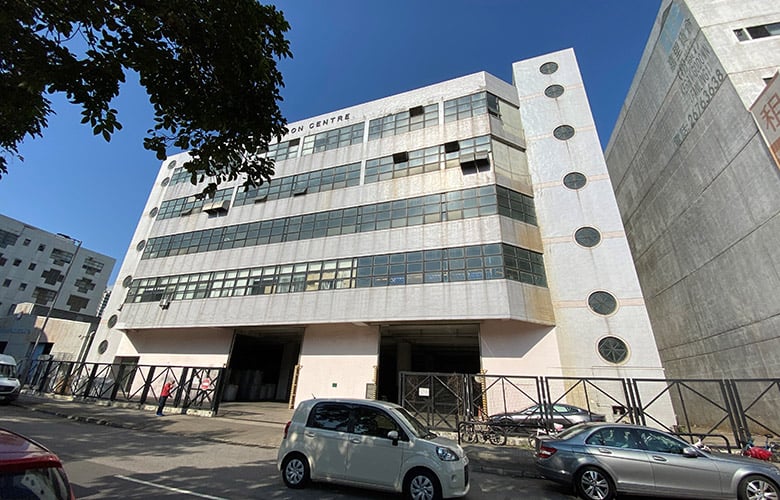
The Mineron Centre occupies a 60,547 square foot site
The family of late “Shop King” Tang Shing-bor has sold a second New Territories industrial asset to China Resources Group, as the cash crisis of one of Hong Kong’s most active real estate investors creates an opportunity for the mainland conglomerate to expand its logistics holdings.
Just two weeks after selling the East Asia Industrial Building in Tuen Mun to China Resources Logistics for HK$2.24 billion ($290 million), the Tang family is offloading the Mineron Centre, a 152,762 square foot (14,192 square metre) property in the New Territories hotspot of Fanling for HK$695 million, according to an announcement this week by Colliers International, which advised on the disposal.
Market sources confirmed to Mingtiandi that the buyer in this latest transaction is again a unit of China Resources.
Since the passing of its patriarch in May, the Tang family has hurried to sell off assets after having been sued earlier this year by creditors seeking to collect on unpaid debts. This asset liquidation has been supported by a growing market for Hong Kong warehouses and workshops after local authorities created incentives for redeveloping industrial properties.
“The successful disposal of the Mineron Centre demonstrates investors’ confidence in the prospects of Hong Kong’s property investment market,” Colliers said in a statement. The property consultancy cited “the favourable government policy for industrial redevelopment” as helping to boost investor interest in properties like the Mineron Centre.
Old Partners Reunited
Now led by Tang Shing-bor’s youngest son, Stan, the Tang family, which is best known for its portfolios of retail and hotel assets, is selling the property at 35-37 On Lok Mun Street for the equivalent of HK$4,550 ($585) per square foot of gross floor area, in what Colliers called the largest en-bloc industrial transaction in Fanling this year.

Stan Tang has inked another deal with China Resources
The property covers a 60,547 square foot site that is currently occupied by an 18,386 square foot set of low-rise steel warehouses and a five-storey high-rise block of 134,000 square feet. Located about 15 minutes’ travel from the mainland border, the warehouse units are sold with a lease in place while the vertical block is untenanted.
The transaction marks a return engagement in Fanling for the Shenzhen-based conglomerate and the Tang family after China Resources Beer (Holdings) Co Ltd purchased 17-19 Lok Yip Road in July of last year. In that deal for the Kader Industrial Centre, the Hong Kong-listed brewer of China’s Snow beer paid HK$820 million for the property just 10 minutes’ walk from the Mineron Centre.
In the face of growing pressure from creditors, the Tang family has been rushing to liquidate assets for more than a year. Bloomberg reported in December that the Shop King had put a quarter of his properties — assets valued at HK$75 billion — on the market.
Fanling on the Rise
Colliers pointed to this week’s transaction as part of a burst of Fanling activity this year.

Russell Lam, director of capital markets and investment services at Colliers in Hong Kong
“We have observed robust investment activities in industrial assets in Fanling in the first half of this year, and the average per square foot price for these assets has picked up tremendously,” said Russell Lam, director of capital markets and investment services at Colliers in Hong Kong.
The Fanling rush kicked off in January when Silkroad Property Partners paid HK$321 million (HK$3,284 per square foot) to acquire the six-storey Smile Centre at 10-12 On Chuen Street.
Then in March, the Hong Kong Housing Society spent HK$270.8 million (HK$6,505 per square foot) on an en-bloc industrial property at 5 Lok Yip Road, and in June an end-user paid HK$217 million (HK$5,329 per square foot) to acquire the Yau Shing Hong Logistics Centre at 38 On Lok Mun Street.
Colliers added that a logistics company this year paid more than HK$600 million to acquire five floors in a Fanling industrial project being developed by local builder Billion Development and Project Management. That asset at 18 On Chuen Street changed hands at a rate well over HK$5,000 per square foot, according to the agency.
“From these transactions, we can see industrial assets in Fanling were appealing to both investors and end-users,” Lam said.
Leave a Reply